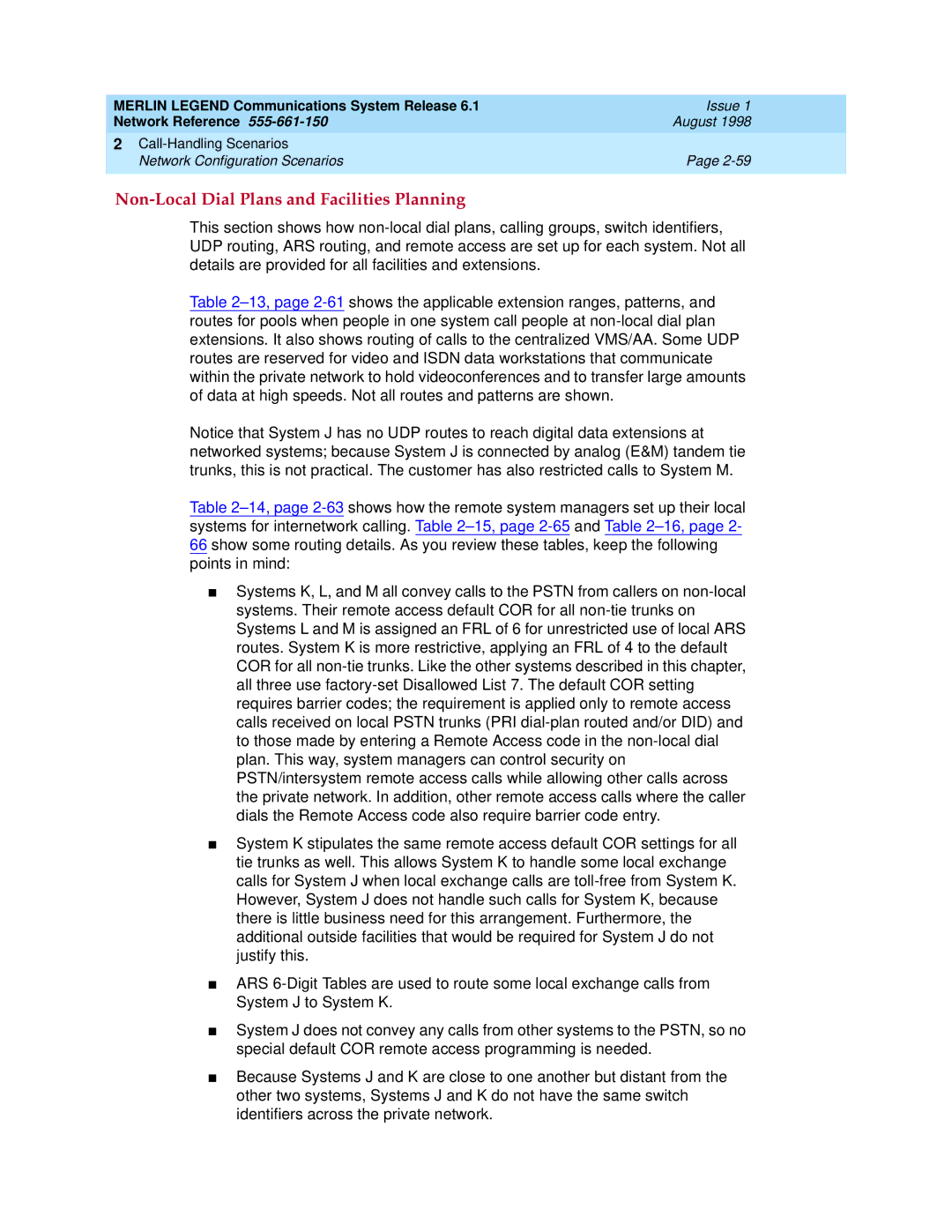MERLIN LEGEND Communications System Release 6.1 | Issue 1 |
Network Reference 555-661-150 | August 1998 |
2 Call-Handling Scenarios | |
Network Configuration Scenarios | Page 2-59 |
| |
Non-Local Dial Plans and Facilities Planning | 2 |
This section shows how non-local dial plans, calling groups, switch identifiers, UDP routing, ARS routing, and remote access are set up for each system. Not all details are provided for all facilities and extensions.
Table 2–13, page 2-61 shows the applicable extension ranges, patterns, and routes for pools when people in one system call people at non-local dial plan extensions. It also shows routing of calls to the centralized VMS/AA. Some UDP routes are reserved for video and ISDN data workstations that communicate within the private network to hold videoconferences and to transfer large amounts of data at high speeds. Not all routes and patterns are shown.
Notice that System J has no UDP routes to reach digital data extensions at networked systems; because System J is connected by analog (E&M) tandem tie trunks, this is not practical. The customer has also restricted calls to System M.
Table 2–14, page 2-63 shows how the remote system managers set up their local systems for internetwork calling. Table 2–15, page 2-65 and Table 2–16, page 2- 66 show some routing details. As you review these tables, keep the following points in mind:
■Systems K, L, and M all convey calls to the PSTN from callers on non-local systems. Their remote access default COR for all non-tie trunks on Systems L and M is assigned an FRL of 6 for unrestricted use of local ARS routes. System K is more restrictive, applying an FRL of 4 to the default COR for all non-tie trunks. Like the other systems described in this chapter, all three use factory-set Disallowed List 7. The default COR setting requires barrier codes; the requirement is applied only to remote access calls received on local PSTN trunks (PRI dial-plan routed and/or DID) and to those made by entering a Remote Access code in the non-local dial plan. This way, system managers can control security on PSTN/intersystem remote access calls while allowing other calls across the private network. In addition, other remote access calls where the caller dials the Remote Access code also require barrier code entry.
■System K stipulates the same remote access default COR settings for all tie trunks as well. This allows System K to handle some local exchange calls for System J when local exchange calls are toll-free from System K. However, System J does not handle such calls for System K, because there is little business need for this arrangement. Furthermore, the additional outside facilities that would be required for System J do not justify this.
■ARS 6-Digit Tables are used to route some local exchange calls from System J to System K.
■System J does not convey any calls from other systems to the PSTN, so no special default COR remote access programming is needed.
■Because Systems J and K are close to one another but distant from the other two systems, Systems J and K do not have the same switch identifiers across the private network.
